Doorbells: what are they and how to choose?
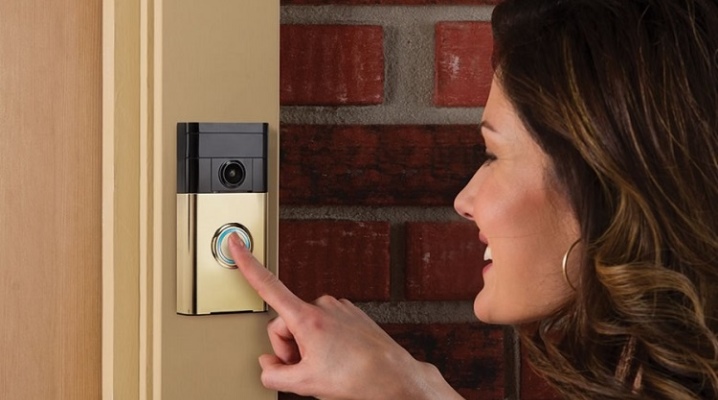
A strong door and a reliable lock will protect well from intruders. The doorbell has the opposite function - to help everyone enter the house who can and should get there. However, the choice of this device will have to be approached with great care.
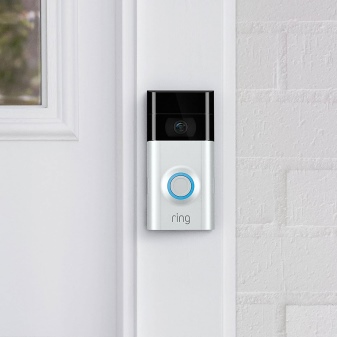

Peculiarities
The doorbell device can differ significantly depending on its type and design nuances. But in any case, such a device works according to the same principle: after pressing a button, a certain sound is heard. It is not always even a ringing in the usual sense - it may well be some other sound.
You can consider the principle of operation of the bell for the front door using the example of a simple electrical apparatus. Mechanical devices differ only in that there are no electrical components, and electronic ones - in the presence of several additional parts.



The electric bell includes:
- electromagnet;
- hammer;
- anchor;
- contacts;
- ringing part (cup);
- special spring;
- buttons;
- wires;
- optional - electric battery.


If no electricity is supplied at a certain moment, the contact is pressed against a screw connected to one terminal. The second terminal is attached to the surface and to the anchor. When the button is pressed, the circuit is closed and the armature is attracted to the pole of the electromagnet. The hammer hits the cup, the contact breaks the circuit. The supply of current therefore stops, and the electromagnet releases the armature.
The spring moves the armature away from the pole. In this case, the brass contact is pressed against the surface of the screw again and closes the circuit. This sequence is repeated over and over until the button is released. The electrical part turns off by itself, you just have to stop putting pressure on it.
A special wire that is laid through the wall helps to connect the internal and external blocks of the bell.
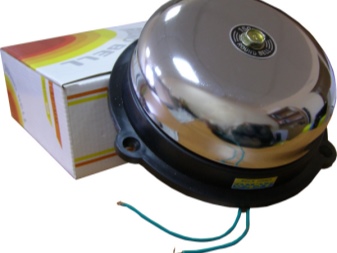
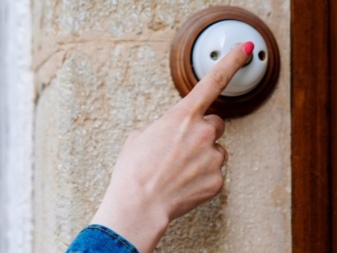
Species overview
Mechanical
The use of the mechanical principle simplifies the doorbell only technically. In terms of execution, they can relate to the retro style. The options are varied:
- bronze head of various animals;
- boot;
- hand knocking on the door;
- mythical or fantasy creature.
In most cases, a mechanical bell is an auxiliary component of the decor. It should correspond to the chosen style of the door and the room as a whole. However, retro mechanics have a nasty property - they don't produce good sound.
There are more advanced options equipped with a spring-loaded button.
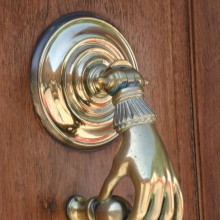

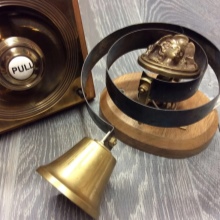
Electromechanical
This is exactly how it would be technically competent to call those calls that are traditionally called "electric" by most consumers. There are many designs:
- with different degrees of electrical protection;
- with or without a built-in battery;
- various colors;
- open and closed installation.
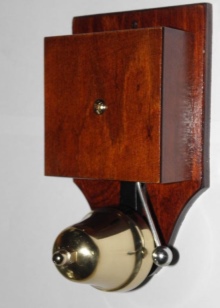

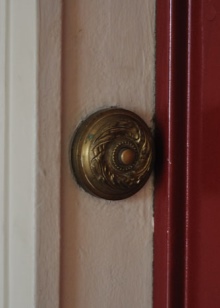
Electronic
They differ from electromechanical ones in small details. When connected to the network, it will not be a hammer, but a special speaker. The power supply is electronically controlled. It becomes possible to select a melody and control the sound volume. Both electronic and electromechanical calls:
- need direct connection to the mains;
- can be installed only with the necessary training;
- will have to pull the network cable.
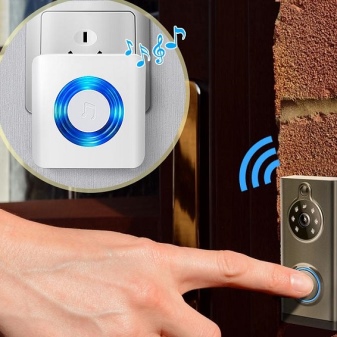
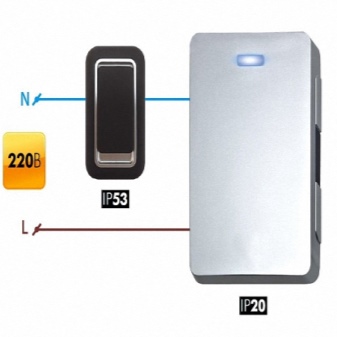
With camcorder
The most advanced (and expensive) calls can come with a camera. With their help, you can talk and see each other, being on both sides of the door. It becomes possible to fix the image and sound. Camcorder calls are suitable for remote monitoring. Some models can be powered both from the mains and from the built-in battery.
Video calls are widespread with options such as:
- door opening remotely;
- illumination at night;
- answering machine.
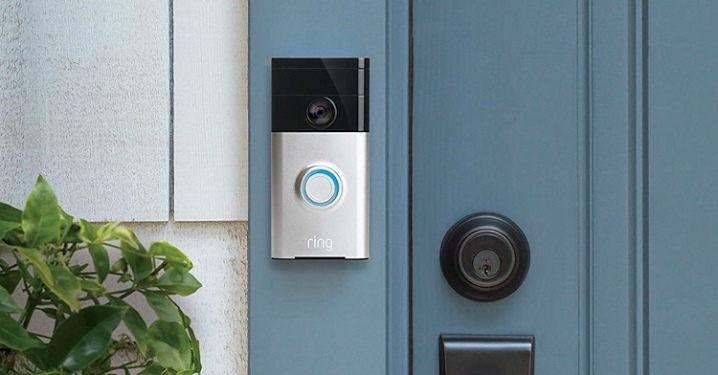
There are many other types of doorbells. The wireless radio call deserves attention. These devices can be powered by batteries or rechargeable batteries. The power supply will have to be changed from time to time. Many factory kits are completely ready-to-use and will only have to be assembled after purchase. But wireless radio calls are still often assembled by hand. There is nothing complicated about it. Homemade designs are no worse than those made at the factory. The bottom line is that communication between the receiver and the emitter of the signal occurs wirelessly. Receivers are equipped with antennas, speakers and microchips responsible for sound; most often the supply voltage is 12 V.
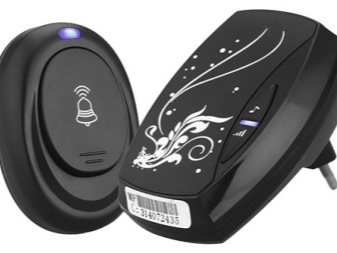
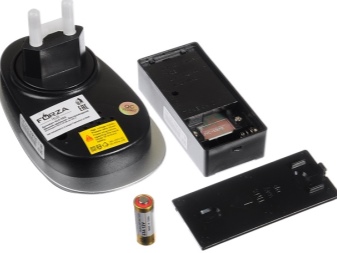
The good thing about autonomous power supply is that guests can easily get inside, even if there is a sudden power failure. For obvious reasons wireless calls are the only choice for a country house or summer cottage where there is no power supply at all... The need to periodically change batteries or rechargeable batteries is unlikely to be a pleasure, but this is already a matter of priorities; and there are some models with network connection or push-to-power generation. Wireless calls are not available everywhere because the barriers and the interference they create are often insurmountable. But it will turn out to establish one radio call for communication with two or more buttons, and not stretch several wires at once.
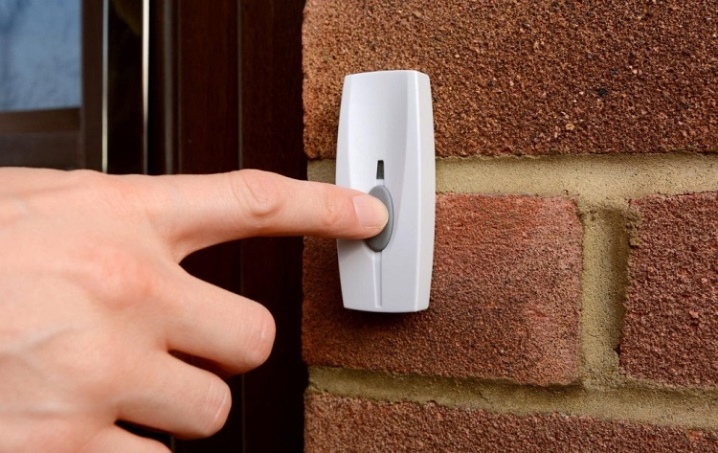
Often a “smart” call with a motion sensor is chosen for the home. But such designs can also be used in a store, in an office building, in warehouses and at production facilities. They let you know immediately when someone has entered or exited. Most often, motion sensors are guided by the recognition of heat rays and can be triggered at a distance of 6-10 m. Many calls with such "stuffing" are capable of producing a variety of melodies.
But the remote call can work not only in the general radio range. Models using Wi-Fi are becoming more widespread. A striking example is the models of the Cleverdog series. They are also equipped with video cameras with a significant increase in the image and HD-quality of the picture.

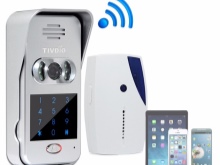
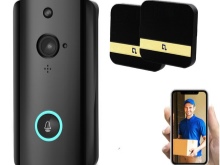
As for the gong models, they are mostly hand-made. The cost of polyphonic ready-made calls is at least 3000 rubles. When choosing a ready-made structure or creating it from scratch, it must be borne in mind that usually 12/24 pipes are enough. This is enough to close a couple of full octaves.
Regardless of the music used or other sound, it is worth taking a closer look at models with a time limiter.



This device will help limit harm from the actions of hooligans and "pranksters". And just all kinds of distributors of goods and services, government services, sectarians and the like. Most often, limiters are assembled using control relays, resistors and diodes. The relay start time after pressing the button is set by the appropriate selection of the resistor. Similar designs (with capacitors) were created back in the mid-1970s by various radio amateurs.
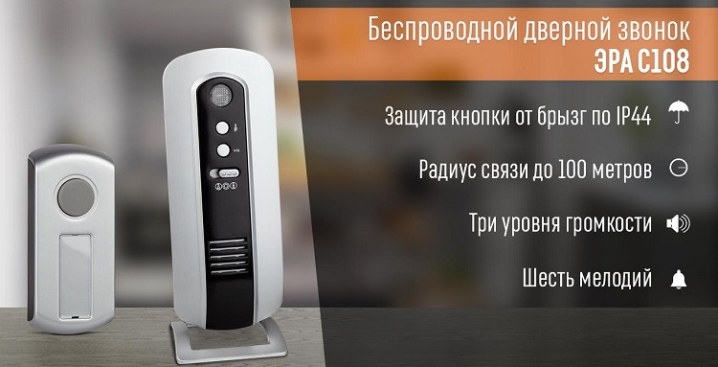
Then began to appear sparkless call models with volume control... An example is the model "ZP-220" produced in 1974. These designs are very robust and many of them still work without any noticeable wear. The design used a steel cup and a plastic cup. It should be noted that the highest quality plastic was used.The diameter of the "ZP-220" is 0.076 m, and the height is 0.036 m. The metal cups differ in color. Adjustment of the force of impact of the hammer on the cup is achieved using a metal bracket. Power supply is standard (from a 220 V network).
There is only one drawback - too unpleasant sound; as an alternative, modern built-in calls with a similar device can be considered.

Popular brands
A good example of a modern wireless chime is "ERA A01"... This blue and white machine is based on analog components. It is capable of processing a signal from a button at a distance of up to 100 m. There are 32 polyphonic melodies. Auto learning is not used. The included button is protected against moisture at the IP20 level. The body is made of plastic. The volume is not adjustable, there is no LED indication. The power source is batteries.
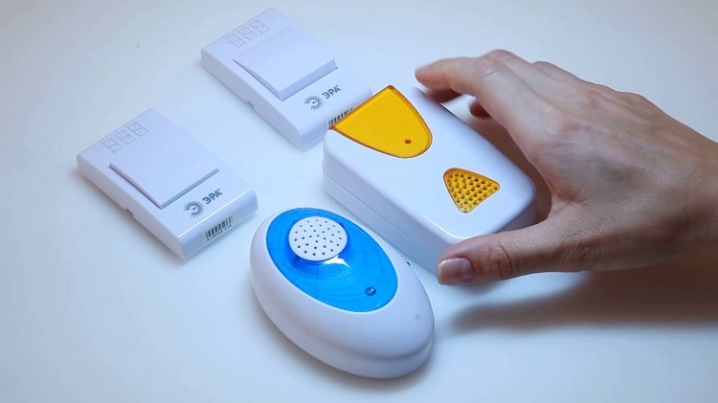
Another wireless model from the same manufacturer - Bionic champagne... Such a bell is designed taking into account all the requirements of modern design. It can be applied in any room. It is possible to connect a number of speakers to one button or control one speaker from different buttons. 6 different melodies are provided. The moisture protection of the button meets the requirements of the IP44 standard.
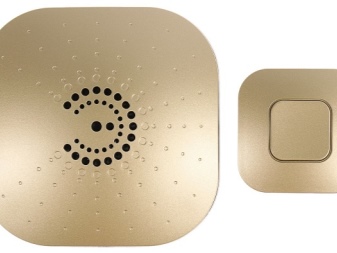
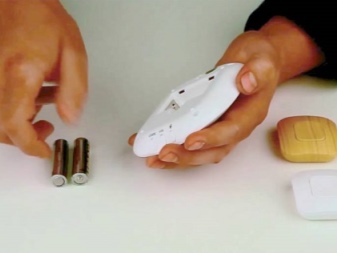
Deserves attention and model Bionic Silver. Such a silver bell was developed by Era designers taking into account all the latest requirements. The design is optimized for use in the city and outside the city equally. There are 6 great tunes provided. The radius of action reaches 100 m.
As an alternative, many consider calls from Evology... The white wireless bell of this brand has a plug for connecting to the network. The device weighs 0.25 kg. The operating range in an open place is stated to be up to 200 m. Chinese engineers have provided for the use of 7 different melodies; there are also modifications of other colors.
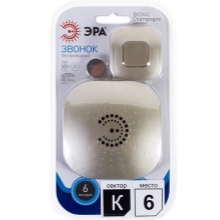
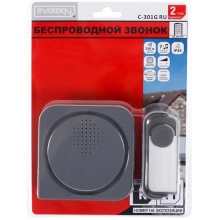
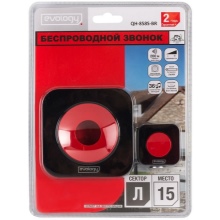
Zamel Classic ST 901 also works wirelessly. It receives power from batteries, and it has enough energy to reach a range of 100 m. The manufacturer claims that its device:
- equipped with 3 different melodies;
- can be used as an internal pager or personal alarm signaling device;
- equipped with optical signaling means (useful for hearing impaired);
- emits sound with a volume of 80 dB;
- operates at 433 MHz;
- not designed for operation in unstable environments (protection category - only IP20).

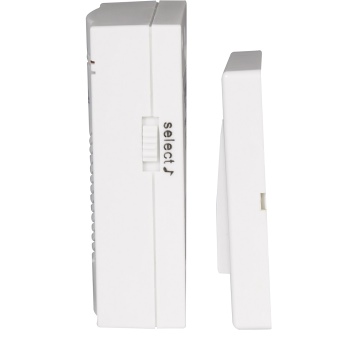
Important: when evaluating manufacturers' statements about the range of operation of devices, it must be borne in mind that they relate to operation in ideal parameters of the external environment.
Any obstruction in the path from transmitter to receiver will reduce this figure. Metal walls and other massive metal objects, thick stone or multi-row brickwork lower it by a factor of 2-3 at least.
Interference can come from power lines, high-frequency or high-power electrical appliances, and cell-site transmitting equipment. Under normal outdoor conditions, calls by Zamel can receive a signal from a button at a distance of 80-100 m.
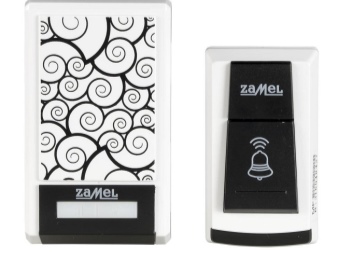
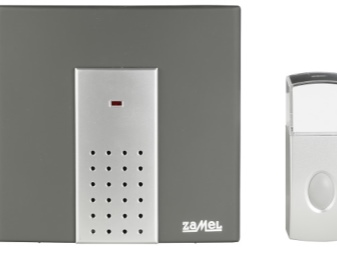
How to choose?
But the reception range is not everything. (Moreover, you need to be able to choose wired calls). It is quite possible to put a wired bell at the gate of the dacha. But still, such systems are often installed in urban housing. In addition to the long length of the wire and therefore its rather weighty price, there is another reason - any dampening will be very harmful and even dangerous. But with the right approach, a wired call can last a very long time... And the device itself (excluding additional components) is inexpensive. In a private house, it is advisable to choose models with video surveillance and video recording - these are important security elements, and not just additional costs. All other things being equal, it is worth giving preference to wireless products. They are simply more convenient and comfortable.
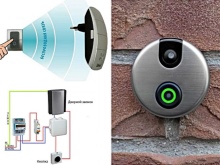
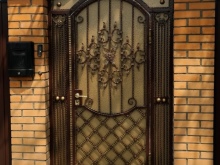

The apartment bell is most often connected to the electrical network. This allows for more sound power. However, if the power goes out for any reason, the network call becomes useless.
It is worth paying attention to its appearance; it is very good if the device looks harmonious in the house. And only in the last place it is worth paying attention to additional functions, to the sound of the melodies used and their variety.
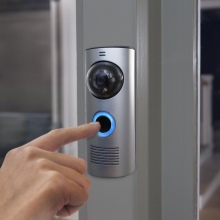
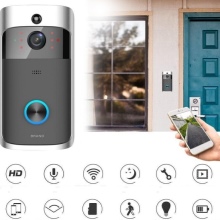
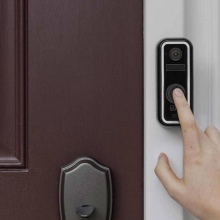
How to decorate?
The doorbell, the button of which is located on the street, definitely needs a canopy from the rain. Without this protective element, the button will often fail, not only during precipitation, but also, for example, when the snow begins to melt in spring. The easiest way to get rid of a bad-looking wired device is to replace it with a wireless analog (which can be installed wherever it is convenient). Another logical alternative is a model built directly into the door. You can hide the call in the home corridor using:
- deepening into the wall and masking trim;
- mirrors;
- pictures;
- hangers;
- shelves;
- pedestals and lockers.
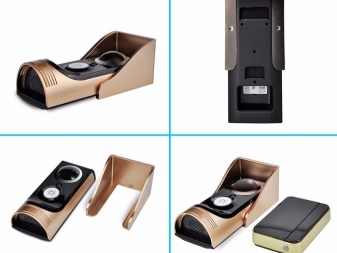
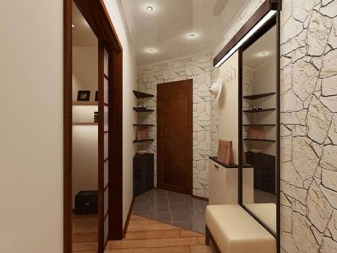
Installation instructions
First you need to turn off the previous call in the apartment or house (if any). Wired models are installed only when the power supply is disconnected. For work you will need:
- hand drill;
- dowels;
- construction knife;
- insulating tape;
- wires;
- indicator screwdriver or voltmeter;
- self-tapping screws;
- an electrical circuit or a wiring finder (or better, both together).
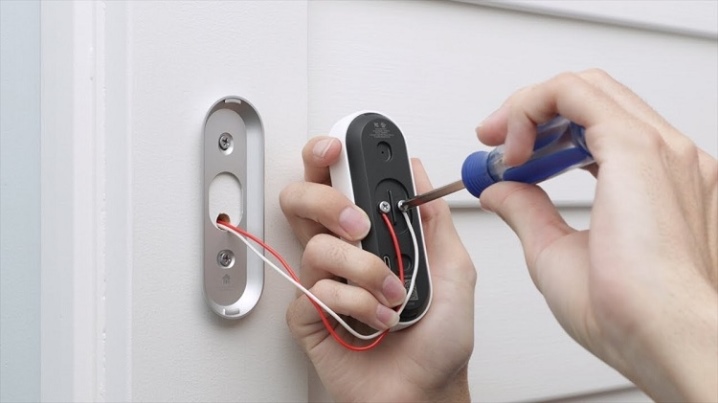
For connection, you can use either one wire with 2 cores, and two wires with 1 core. The inner section must be at least ½ sq. mm. Important: the wire material must be the same as in the rest of the network. Most often, standard wiring is used in modern new buildings. The zero wire is connected to the sound device, and the phase wire is connected to the button.
Very long contacts are trimmed and cleaned with a construction knife. Compression with pliers will help increase reliability. After the connections are isolated, they are tested immediately. Only after this check can all devices be fixed to a permanent place. Important: there should be no heating devices at a distance of 0.5 m from the bell and the button.

Possible malfunctions
Sometimes the doorbell doesn't work. Or calls by itself. Such problems can affect both conventional and wireless models. Call failure is triggered by one of three factors:
- problems with the button;
- problems in the electrical circuit;
- breakdown of the receiving device.
When the button stops working, it is disassembled and the contacts are closed. Important: work best with rubber gloves. If there is no sound again, they clean the contacts. In case of further failure, you will have to open the bell body. The soldered contacts are covered with flux, and then the solder is removed with a braid.
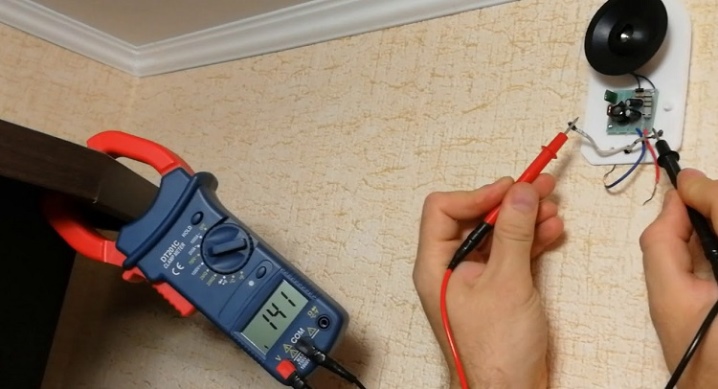
After soldering a new button to the board, connect the contacts or insert the battery and carry out the test again. If successful, you can close the case and put everything back in place. If the circuit is broken, you will have to call an electrician. But before that, you should look for the break point with a tester or a table lamp. Recommendation: if you can save an old-fashioned call made in the last century, you should do it; it will definitely be more reliable than modern designs.
Replacing the discharging batteries with fresh ones or eliminating the induced signal helps to solve the problem with the uncontrolled ringing of the wireless call. If the frequency coincides, it can "act" on different floors and in different entrances, in different suburban areas. You can fix the problem:
- manually changing the frequency (on some models using the wheel);
- by working with a trimmer;
- using the services of a professional service center or specialized service.
For information on how to connect a doorbell with your own hands, see the next video.













The comment was sent successfully.